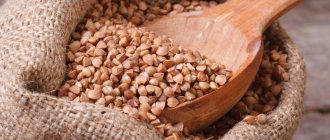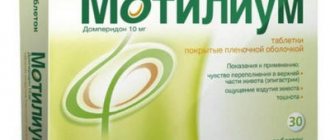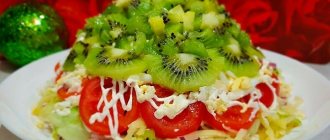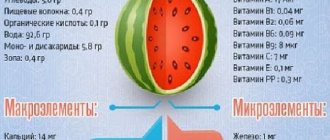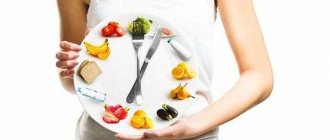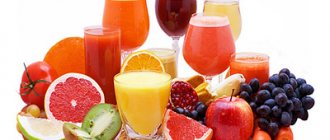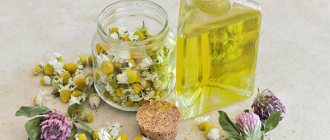When there is inflammation of the gastric mucosa, it is important to follow a diet. A person has to put up with a complete ban on fatty, smoked, canned foods, as well as some vegetables and fruits. But is it possible to eat onions with gastritis? After all, this vegetable is present in almost all dishes; many people like to eat it simply with bread. By adhering to a diet, the patient must saturate his body with useful elements. Onions are rich in biologically active substances: essential oils, flavonoids, minerals and vitamins. In what form and in what cases is onion useful, and when it should not be eaten.
Is it possible to eat onions if you have gastritis or ulcers?
For gastrointestinal diseases, there is no categorical ban on onions. Another thing is how to use it and in what quantity. Sometimes onions (for example, fried) themselves can provoke the development of gastritis. And if there were already prerequisites for an ulcer, the condition of the gastric mucosa will worsen.
Effect on the stomach
Onions stimulate the digestive system and metabolism. Oils and phytoncides cause the gastric glands located in the near-surface layer of the epithelium to activate the secretion of hydrochloric acid. If the stomach is healthy, it does not perceive this as a load and works as usual.
For various forms of gastritis
If you have gastritis with high acidity, you cannot eat any types of onions raw. Hydrochloric acid is released in large volumes, destroys the mucous membrane and forms ulcers.
For gastritis with low acidity, it is allowed to eat heat-treated vegetables in salads and hot dishes.
For stomach ulcers
Onions contain flavonoids that have an antimicrobial effect, but with a stomach ulcer, even during remission, they will not be beneficial. The disease will worsen. Vegetables for ulcers are also eaten only when heat-treated; green vegetables are completely excluded.
Is it possible to eat raw vegetables?
Any irritating substances are prohibited in acute forms of inflammation, when a gentle diet is prescribed.
For atrophic gastritis, raw onions are also unsafe. The atrophied mucosa is very sensitive and reacts more strongly to the effects of phytoncides by increasing the inflammatory reaction. Against the background of increased acidity and erosive gastritis, stimulation of the secretion of acidic gastric juice will only aggravate the situation and expand the area of damage.
The only variant of gastritis in which you can afford raw onions in moderation is hypoacid. The increased secretion of hydrochloric acid will just bring the pH of the gastric contents to average values, and a normally functioning protective barrier will not allow essential oils to provoke irritation. However, it is too early for patients with “forbidden” forms of inflammation to get upset. Fortunately, the light did not converge on raw onions; there is always the opportunity to replace it with a heat-treated analogue.
Beneficial properties of onions for gastritis and other stomach diseases
Ascorbic acid, vitamins and minerals contained in onions benefit not only the stomach, but the entire body. For diseases of the gastrointestinal tract, the vegetable is eaten heat-treated.
Green
It is not recommended to eat it fresh for gastrointestinal diseases, even during remission. It burns the stomach and causes pain. This applies to any feathery vegetable: shallots, leeks, batun. Although it is in feathers that the content of vitamins A, B and C is maximum, and phytoncides have a healing, antiseptic effect and even kill Helicobacter pylori, a pathogenic bacterium that causes gastritis. However, here the benefit is offset by the harmful effects.
Onion
It is usually not eaten raw. When cooked, it partially loses vitamin C, retaining all other benefits: phytoncides, flavonoids, essential oils, microelements. Purple onions will bring maximum benefit without irritating the gastric mucosa.
Chemical composition
Leek is a dietary food product characterized by a high content of ascorbic acid and potassium salts. 100 grams of product contains 36 calories.
Table No. 1 “Nutritional value of leeks”
| Components | Content per 100 grams of product, grams |
| Water | 88,0 |
| Carbohydrates | 6,3 |
| Mono- and disaccharides | 6,0 |
| Alimentary fiber | 2,2 |
| Squirrels | 2,0 |
| Ash | 1,2 |
| Starch and dextrins | 0,3 |
| Fats | 0,2 |
| Organic acids | 0,1 |
Table No. 2 “Chemical composition of leeks”
| Name | Nutrient content per 100 grams of product, milligrams |
| Vitamins | |
| Ascorbic acid (C) | 35,0 |
| Beta carotene (A) | 2,0 |
| Tocopherol (E) | 0,8 |
| Niacin (B3) | 0,5 |
| Pyridoxine (B6) | 0,3 |
| Pantothenic acid (B5) | 0,12 |
| Thiamine (B1) | 0,1 |
| Riboflavin (B2) | 0,04 |
| Folic acid (B9) | 0,032 |
| Biotin (H) | 0,0014 |
| Macronutrients | |
| Potassium | 225,0 |
| Calcium | 87,0 |
| Phosphorus | 58,0 |
| Sodium | 50,0 |
| Silicon | 35,0 |
| Magnesium | 10,0 |
| Microelements | |
| Iron | 1,0 |
| Zinc | 0,57 |
| Manganese | 0,48 |
| Copper | 0,15 |
| Bor | 0,0244 |
| Vanadium | 0,0068 |
| Cobalt | 0,0034 |
| Chromium | 0,000002 |
Mono- and disaccharides that make up leeks are represented mainly by glucose (4%), fiber (8.8%), and pectin (10%). In addition, the culture contains phytosterols, most of which are beta-sitosterol (10.5%), purine bases, linolenic, linoleic, oleic unsaturated fatty acids and phytoncides. The latter, in turn, block the proliferation of pathogenic fungi and bacteria.
How onions affect acidity
Any type of onion affects acidity due to the phytoncides in which it is rich. Eating a vegetable in any form and at the same time maintaining normal stomach acidity will not work.
Increases or decreases
Phytoncides increase the production of hydrochloric acid, resulting in increased acidity in the stomach. The first sign of negative effects is heartburn. If the acidity has been reduced, onions will stabilize it. However, the vegetable should not be overused so that the acidity does not increase too sharply.
How to eat when you have high acidity
Onions are eaten boiled or blanched as part of salads, soups, and main courses. Cook it for no more than 2 minutes - just pour boiling water over it and add it to food. This way the vegetable becomes soft, sweet, and its beneficial properties are preserved.
Attention! During the period of exacerbation of gastritis with high acidity, it is better to abstain from any onion dishes.
If your stomach hurts
It happens that it is not possible to refuse a prohibited product. For example, when visiting or in a restaurant, when you don’t immediately realize that the salad or soup is richly flavored with onions. The stomach may react to a prohibited ingredient with pain, nausea, sour taste in the mouth, and heartburn.
Then you need to provide timely help to the stomach: take an antacid drug that reduces acidity and protects the walls of the stomach (Almagel, Gaviscon, Maalox). Medicines that suppress the secretion of hydrochloric acid - omez, pariet, nexium, ranitidine - can also help.
Important! The sooner you start treatment after breaking your diet, the greater the chance that gastritis will not develop fully. Therefore, take “first aid” medications with you to feasts. Some antacids come in a convenient form (Gastal, Gaviscon) that you can put in your bag and drink without attracting everyone's attention.
If the symptoms have not gone away completely, then treatment should be continued for several days, following a strict diet, and consult a specialist at the first opportunity.
Of course, raw and heat-treated onions differ in taste and are not a complete alternative to each other. The baked vegetable is also tasty, and most importantly, healthy - many important substances for the body are not destroyed when heated. You just need to look for original ways to prepare such a product and approach culinary experiments creatively.
What is in onions that is harmful to the stomach?
The vegetable is rich in microelements, vitamins, phytoncides, flavonoids, and essential oils. This set benefits the body. But certain components of onions, which fight viruses, fungi, and help digestion, can harm an inflamed stomach:
- Phytoncides are substances that destroy viruses and slow down their development, kill lower fungi and bacteria. This vegetable contains phytoncides in dissolved form. The digestive juice of the stomach cannot change them, so the antimicrobial effect extends to the entire gastrointestinal tract. If the gastric mucosa is irritated due to an inflammatory process (gastritis/ulcers), phytoncides aggravate the symptoms of the disease.
- essential oils are known to everyone for their persistent and pronounced specific odor, which provokes lacrimation and causes a burning sensation in the mouth. But it is oils that eliminate digestive problems and improve food absorption. However, the burning sensation from essential oils also spreads to the internal organs, especially when the vegetable is consumed raw. The irritated gastric mucosa will react to this by the appearance of ulcers.
How to select and store?
Leeks should only be purchased with strong green leaves and bulbs that are white and firm and show no signs of wilting. The younger the vegetable, the more tender and aromatic its taste will be. The length of the white part should not exceed 7 cm.
Before eating, leeks should be thoroughly washed, since many small stones and soil accumulate in the lower part of the plant. If desired, you can soak it for 30 minutes in cold water. This will remove nitrates from the product (if organic mixtures or mineral fertilizers were used to stimulate plant growth). To preserve the beneficial properties, leeks are stored in plastic wrap in the refrigerator. If the onions are not packaged, other products will absorb the pungent odor of the vegetable. From 5 to 7 pieces are placed in one package. The vegetable is not cut or washed before storage. Otherwise it will quickly deteriorate.
Pearl onions have a unique feature: during storage, they accumulate ascorbic acid, so that its content increases by 1.5-2 times.
Features of using onions for gastritis or ulcers
Gastritis is an inflammatory process in the gastric mucosa. An ulcer is a deeper lesion affecting its submucosal layers. People with such diseases adhere to special diets. They are based on products that do not irritate the walls of the stomach.
How do onions fit into such a strict diet?
Fresh
Boiled onions
They don't use it. Both feathers and turnips have an irritating effect on the gastrointestinal tract. Not only gastritis occurs, but also flatulence, colic, constipation and diarrhea.
Boiled
Is it possible to have boiled onions for gastritis? Yes, but outside the stage of exacerbation of the disease. With this heat treatment, most of the microelements and vitamins are preserved, and the irritating effect is reduced.
Fried
Frying produces a large amount of carcinogens, and adding oil makes such dishes too fatty. These two factors negatively affect the digestive system.
Attention! Eating fried onions for gastritis and ulcers is prohibited.
Baked
Oven-baked vegetables are allowed for gastritis, ulcers and erosion. With this method of preparation, all irritating substances are destroyed, but useful substances remain. Bake the vegetable until golden brown and juice appears on the baking sheet in small quantities.
Stewed
Stewed onions, like boiled ones, can be consumed. Stew in water without adding spices or salt. The combination of onions and seasonings has a destructive effect on the gastric mucosa.
In the form of juice
Onion juice irritates the walls of the stomach due to the high concentration of essential oils. It is diluted with boiled water in a 1:1 ratio.
Onion peel
It is baked, stewed, boiled. Do not consume it raw. It is the husk that is included in dozens of folk recipes for the fight against gastritis and ulcers.
Reference! During periods of exacerbation of gastritis and ulcers, eating onions in any form is prohibited. Only a gastroenterologist will give recommendations on when to reintroduce it into the diet.
Kinds
In terms of popularity, leeks are second only to their onions, leaving behind other varieties of the onion family. It is distinguished by high yield and sweet, delicate taste.
Types of leeks by ripening time:
- Summer. This includes early ripening varieties. This is the most productive species. Summer leeks ripen within 90-140 days. The diameter of the leg is 4 cm, and the weight of one specimen is 0.3 kg. The leaves are thin, light green in color. The harvest begins when the lightened part of the stem reaches 0.4 m in length. Early products are used for processing or summer consumption.
Early ripening varieties include leeks Columbus, Vesta, Elephant Trunk, White Fang, Goliath.
- Autumn. Ripening time is 150-160 days. The stem is thin, reaches 2 cm in diameter, the weight of the plant is 0.2 kg. Mid-ripening species have large, darker leaves than early-ripening ones.
The most popular autumn varieties: leek Kazimir, Pobeditel, Elephant, Dobry Molodets, Kilima, Tango.
- Winter. Ripens for more than 6 months. The leaves are dark with a characteristic bluish waxy coating. The leg is thinner than that of autumn and summer varieties, does not exceed 2 cm in diameter. They are distinguished by high cold resistance and a thick, bleached part.
Winter varieties include: leek Alligator, Karantansky, Bandit, Autumn Giant, Mercury.
Early ripening varieties grow quickly, have a high above-ground part (up to 1.5 m), and are not winter-hardy. The harvest period is from August to early September. Mid-season varieties have powerful leaves that are tightly located on the false stem. Adult plants can tolerate ambient temperatures down to minus 15 degrees. Ripen in early October. Late-ripening varieties are characterized by a short stem (0.14 m), slow development, and a very dense arrangement of leaves on the stem. Cold-resistant. In the southern regions, harvesting occurs from November to April.
Due to the long growing season, winter varieties are not grown in northern latitudes. Summer and autumn species are cultivated in the middle zone.
Medicinal recipes with onions
In the fight against stomach pain, they try folk recipes based on herbs, oils, decoctions, and cereals. There are also medicinal recipes based on onions.
Important! Check with your gastroenterologist to see if a specific prescription is right for you.
For gastritis with high acidity
Recipe 1:
- You will need 3 tbsp. l. onion peel infusion, 3 tbsp. l. honey
- Honey is dissolved in a warm infusion.
- Take 3 times a day 1.5 hours before meals. The course is 1.5-2 months.
Recipe 2:
- You will need 2 tbsp. l. infusion of onion peel, 100 g of aloe juice, squeezed from juicy leaves, 100 g of honey.
- Mix everything, take 1 tsp. 3 times a day before meals. Course - 3 weeks.
Recipe 3:
- You will need June greens of onions, garlic, turnip tops, beets and carrots.
- Grind all ingredients with a small amount of salt and season with vegetable oil.
- Serve as a salad for lunch for 3 weeks.
With reduced
Recipe 1:
- You will need 200 g of onion peels, 200 g of plantain leaves.
- The husks and plantain are crushed, pour 1 tbsp. boiling water
- Keep on low heat for 5 minutes.
- Cool, filter, drink 1 tbsp. l. in the morning on an empty stomach. Take until acute pain disappears.
Onion soup recipe:
- You will need 3 potatoes, 1 carrot, 400 ml of milk, 100 g of hard cheese, 1 large and 6 medium-sized onions, vegetable oil.
- Peel a large onion and simmer with vegetable oil and water (1:1).
- 6 onions, potatoes and carrots are finely chopped and poured into a pan with salted boiling water.
- Add the poached onion and cook until the potatoes are ready.
- After cooking, add milk and grated cheese.
- Bring to a boil, but do not boil, cover with a lid, leave for 30 minutes. This soup relieves spasms in gastritis with low acidity. They eat it when they notice the appearance of characteristic pain.
For ulcers
Recipe 1:
- You will need 2-4 bulbs.
- Steam the onion or bake in the oven.
- Eat 50-100 g 1-2 times a day 10 minutes before meals for 2-3 weeks. After 10 days the course is repeated.
Onion jam recipe:
- You will need onions and sugar in equal proportions.
- The onion is peeled and chopped into cubes or strips.
- Boil onion and sugar for 5-7 minutes over medium heat (ingredient ratio 1:4).
- Add chopped onion to the syrup and cook until the liquid has completely evaporated. The mass should become thick.
- Pour into glass jars, cover with lids and store in the refrigerator.
- Take 1 tbsp on an empty stomach. l. half an hour before meals.
What are the benefits of leeks?
General benefit
In addition to the fact that this type of onion has excellent taste, it also has great health benefits:
- Due to the presence of sulfur in the composition, leek stops inflammatory reactions in the body. This substance is also considered a first-class preventative against arthritis; it prevents deformation of cartilage tissue.
- Leeks contain quercetin - this is one of the recognized antioxidants that neutralizes the negative effects of free radicals, it protects against cancer, neutralizes allergens and their external manifestations on the skin, and suppresses asthma attacks.
- Leek is effective for digestive disorders, constipation, as an antibacterial, expectorant and antifungal agent.
- Due to its high potassium concentration, it has a good diuretic effect.
- The product also promotes tissue regeneration, lowers blood cholesterol levels, and acts as an effective remedy against diarrhea.
- Onions contain a unique mustard oil - allicin, which has disinfectant properties; it works especially well for infections of the genitourinary system.
- The product helps improve vision and improve overall eye health.
- Leek is recommended for people suffering from anemia as it increases iron levels.
Video:
why you should eat leeks Expand
For women
Women should definitely pay attention to leeks if they want to stay young and beautiful for a long time. A high concentration of ascorbic acid helps strengthen the immune system, normalizes the emotional background and relieves nervous tension. It prevents the early appearance of wrinkles and improves hair condition.
Quercetin present in leek is considered one of the best antioxidants. Its ability to stop the growth of cancerous tumors has been proven. Kaempferol, another antioxidant, is especially beneficial for women as it is an effective preventative against ovarian cancer.
For men
Just a few centuries ago, leeks were one of the most common natural aphrodisiacs. Therefore, men suffering from low libido should add it to their diet. It is advisable to use it daily, with the minimum acceptable frequency being several times a week.
For representatives of the stronger half of humanity, leeks are also recommended as a natural source of vitamins. It fills with energy, which can be fundamentally important for athletes with increased strength loads.
During pregnancy
If there is no individual intolerance to the product, pregnant women can also eat leeks, but in limited quantities (no more than 150 g per day) and not daily. Ideally - 2-3 times a week. Due to the large amount of vitamin C, it will protect the expectant mother’s body from colds and viral infections. Folic acid present in leeks (32 mg per 100 g) protects the fetus from developmental defects and is responsible for the formation of a healthy nervous system. Dietary fiber provides daily bowel movements.
When breastfeeding
Leeks, like regular onions, can be returned to the diet during breastfeeding no earlier than 3 months after birth. This is due to the fact that its specific taste can affect the taste of milk, and the baby will refuse the breast.
Video:
mother's nutrition during breastfeeding Expand
For children
Children's menus should also include leeks. Children under one year old can be given it boiled, pureed. It is necessary to start complementary feeding with 1/3 teaspoon, gradually increasing to 1 teaspoon in one serving. The best time to enter it for the first time is 8 months. It goes well with other vegetables suitable for complementary feeding. Leek is useful for children as an excellent source of vitamin C and iron. It helps strengthen the immune system and prevents iron deficiency anemia. Magnesium and folic acid are responsible for the normal functioning of the nervous system.
When losing weight
Leek contains no fat at all, so it can be eaten during a diet without fear of the opposite effect. Due to the lack of fat, it does not satisfy hunger well, but in combination with other vegetables in salads it contributes to gradual satiety. Leek stabilizes metabolic processes in the body and helps naturally remove toxins and poisons.
Which type of onion to choose for gastritis and other stomach diseases
They eat all parts of onions: feathers and bulb. Baton, shallot and leek greens are consumed with caution unless there is an exacerbation of stomach diseases. Before using it, scald with boiling water. The beneficial properties are preserved, and essential oils, partially destroyed by hot water, irritate the mucous membranes less.
Onions differ not only in varieties, but also in colors. Purple onions are healthier for the gastrointestinal tract. Its value is the presence of anthocyanins. These substances give it an unusual color and prevent the development of cancerous tumors. The purple onion also contains the flavonoid quercetin, which has anti-inflammatory properties. It soothes irritated mucous membranes due to gastritis.
Bulbs that are yellow, red, or orange-yellow are hotter in flavor than purple ones. They are eaten boiled, baked or stewed.
The hottest onion is white. The concentration of essential oils and phytoncides in it is the highest. It is added thermally processed to soups, main courses and salads.
Attention! For gastritis and ulcers, the amount of white onion in a dish is no more than 1/8 of the onion.
Botanical description
The plant reaches 0.4-0.9 m in height. In the first year of life, the culture forms a powerful root system. The leaves are flat, long (0.4-0.6 m), greenish-blue in color, arranged in a fan. The flowers are small, form an umbrella, and are whitish or pink. The bulb is elongated, with a diameter of 0.02-0.08 m and a length of 0.1-0.12 m. The white basal part of the plant is eaten. Propagated by seeds, which remain viable for up to 2-4 years.
Currently, 3 varieties are cultivated: winter, autumn and summer leeks. The harvest season is April-May and September-December.
Pearl onions are a cold-resistant crop that prefers abundant watering (without waterlogging), high-humus floodplain or loamy soils.
How to eat onions during exacerbation of gastritis
Gastritis appears and occurs acutely when eating spoiled food, overeating, or alcohol abuse. If left untreated and the diet neglected, the disease becomes chronic. During this period, it is prohibited to eat onions in any form. It can provoke attacks of pain and spasms.
Gastritis goes away in 2-3 weeks with diet and drug treatment. Then the person gradually returns to his usual diet.
A gastroenterologist will tell you what type of gastritis you have. If you have high acidity, you will eat heat-treated onions 3-4 times a week. If the acidity is low, you can eat it every day, including green feathers.
If your stomach hurts
At the time of exacerbation, onions in any form are contraindicated. Do not ignore your doctor's advice on diet. Otherwise, recovery will take months.
Onion diet
Leek normalizes metabolism, improves the functioning of the gallbladder, liver, gastrointestinal tract and has a diuretic effect, due to which it is recommended for use by overweight people. In addition, onions contain rutin, which prevents the formation of fat cells. To gain harmony, vegetables are included in the daily diet as an independent dish or side dish.
Remember, the maximum amount of nutrients is concentrated in a fresh product. Bulbous vegetables contain chromium, which suppresses cravings for sweets and appetite, and controls blood glucose levels. In addition, leek is low in calories - 36 kcal per 100 grams of product.
During the weight loss period, bulbous vegetables should dominate the diet. They can be eaten raw or boiled. To make the diet effective, limit your intake of fats and carbohydrates. It is highly not recommended to fry vegetables.
In a week of onion menu you can become 2-4 kg lighter.
Diet
Day No. 1
- breakfast – tomato – 0.5 pcs., cottage cheese 5% – 10 g, black bread – 1 slice, leek – 1 pc., unsweetened herbal tea – 1 cup;
- second breakfast – apple and carrot puree – 100 g;
- lunch - onion soup - 250 ml;
- afternoon snack – mix of tofu, pineapple and garlic – 150 g;
- dinner - salad of boiled chicken, corn, eggs, leeks - 100 g.
Day No. 2
breakfast – cucumber – 1 piece, cottage cheese with leek – 100 g, black bread – 1 slice;- second breakfast – onion pie – 100 g;
- lunch – boiled chicken fillet in garlic sauce – 150 g;
- afternoon snack – mix of olives, onions and tomatoes – 100 g;
- dinner – apple and onion soup with mustard – 200 ml.
Day No. 3
- breakfast – steamed scrambled eggs with tomatoes and onions – 150 g;
- second breakfast – grapefruit juice – 150 ml;
- lunch – stewed vegetables with onions – 250 g;
- afternoon snack – green smoothie made from spinach, leek and celery – 200 ml;
- dinner – cottage cheese with spinach and garlic – 150 g.
Day No. 4
- breakfast – rye bread – 1 slice, onion jam – 15 g, fruit tea – 1 cup;
- second breakfast – pear – 1 piece;
- lunch – salad of squid, cucumber, leek, apple and egg, seasoned with lemon juice – 150 g;
- afternoon snack – onion pie with arugula and spinach – 100 g;
- dinner – vegetarian soup – 150 ml.
Day No. 5
- breakfast – low-fat grain cottage cheese – 10 g, black bread – 2 slices, leek – 1 piece, tomato – 0.5 piece, tea with lemon;
- second breakfast – onion casserole – 100 g;
- lunch – boiled turkey meat with caramelized leek – 150 g;
- afternoon snack – orange jelly – 100 g;
- dinner – salad of bell peppers, spinach, cucumbers, tomatoes and leeks – 100 g.
Day No. 6
- breakfast – oatmeal – 100 g, omelette with onions – 50 g.
- second breakfast – garlic salad – 100 g;
- lunch – pizza with low-calorie cheese and onions – 150 g;
- afternoon snack – salad with prunes, bell peppers and leeks – 100 g;
- dinner – zucchini soup, leek – 100 g, cucumber – 1 pc.
Day No. 7
- breakfast – tomato – 1 piece, durum wheat pasta with onions – 150 g;
- second breakfast – freshly squeezed apple juice – 150 ml;
- lunch – pureed onion soup with croutons – 200 ml;
- afternoon snack – leek bread – 2 pcs;
- dinner – tomato juice with basil, garlic – 1 glass.
The onion diet is contraindicated for people with diseases of the digestive tract and a tendency to flatulence, as well as pregnant and lactating women. Leek enhances intestinal motility, stimulates metabolism, gives satiety, and saturates the body with nutrients.
Harm and contraindications
It is difficult for an inflamed stomach to process onions. A person experiences heartburn at this time. After entering the gastrointestinal tract, a partially processed vegetable causes flatulence and colic. In order not to harm the digestive organs, it is consumed in the form and quantity prescribed by the doctor.
It is forbidden to eat onions when:
- gastritis with high acidity;
- peptic ulcer of the stomach and duodenum;
- acute/chronic cholecystitis and pancreatitis.
How to grow?
Currently, leek ranks third in popularity among alliums, second only to its onion counterpart and garlic. Cultivation of the crop begins with seeds, which remain viable for up to 3 years. Before planting, they are pre-treated: placed in hot water (with a temperature of 45 degrees), then in cold water. To get quick germination, the seeds are germinated. To do this, lay them out on a damp cloth and leave them in a warm place. After 3 days, dry the seeds and sow immediately.
Leeks can be grown using the seedless method. In this case, the seeds are sown directly into the ground in mid-May.
To obtain seedlings, observe the timing of sowing seeds:
- in seedling boxes - mid-February;
- glass greenhouse – mid-April;
- under film on the garden bed - end of April.
Seeds are sown in moist soil in rows (every 0.05 m) in a well-lit place. The duration of daylight hours for the crop is 11 hours. The depth of the groove should not exceed 0.015 m. After sowing the seeds, the box is covered with film and placed in a warm place with a temperature of 22-25 degrees. After the first shoots appear, the temperature in the room is reduced to 12-17 degrees. The film is removed. The seedlings survive for 7 days. Then the temperature is increased again to 14 degrees at night and 20 degrees during the day, maintaining it throughout the further period of growing seeds.
Opinion of gastroenterologists
Doctors always care about the patient’s health, so they give maximum recommendations, including nutrition. The opinions of gastroenterologists regarding the use of onions are clear: it is possible, but with caution.
Irina Vasilyeva, gastroenterologist: “The digestive juice of the stomach consists mostly of hydrochloric acid. Onions irritate the walls of the stomach and cause an increase in acidity. As a result, the mucous membrane becomes inflamed, which leads to gastritis. Be careful with the bow."
Fedor Novikov, gastroenterologist, emergency physician: “We often have to see patients, especially at night, with exacerbation of gastritis. For dinner we had a delicious meal with salads, which included onions in large quantities, and raw. Severe heartburn and pain are the main symptoms of stomach problems. We are thinking about how to neutralize onions in the stomach. We save, we treat, we definitely prescribe a diet.”
Cosmetological properties
Leeks have the following cosmetic properties:
- accelerates hair growth (when rubbed into the scalp);
- eliminates unwanted pigmentation on the face, soothes irritated skin after sunburn, prevents the formation of blisters, relieves redness, strengthens nails (masks based on onion stems ground into a homogeneous mass);
- treats calluses (apply baked onion to the problem area).
When consumed regularly, raw leeks help prevent cystitis. The product is especially useful for men, as it serves as a powerful aphrodisiac. The vegetable contains an important sex hormone - androsterone, which enhances the energy and potential of the strong half of humanity.
Leek juice has antiseptic and bactericidal effects. Increases the effectiveness of drug treatment of inflammatory diseases (bladder, arthritis and gout).
